Community Spotlight
This special edition of our Community Spotlight series highlights some of the individuals integral to the development of the Talking About Suicide: Empowering Healthcare Providers, Instilling Hope in Clients course content. These spotlights feature collaborators, advocates, and professionals who brought their insight, experience, and expertise to shaping this critical resource for healthcare providers.
To read more stories from this series, scroll to the bottom of the page.
Cheryl Pollard, PhD RPN RN ANEF
Professor
University of Regina
Hallway Group Member
Mental Health Commission of Canada (MHCC)
Social Media:
LinkedIn: https://www.linkedin.com/in/cheryl-webster-pollard-51b37855/
Affiliated Websites:
University of Regina: www.uregina.ca
Mental Health Commission of Canada (MHCC): https://mentalhealthcommission.ca/
Location: Regina, Saskatchewan
Cheryl’s Spotlight
CHA Learning and the Mental Health Commission of Canada (MHCC) are proud to spotlight one of the many healthcare professionals across Canada working to make mental health and suicide prevention a greater priority in healthcare settings.
This spotlight reinforces the importance of our Talking About Suicide course—a quick-to-complete micro eLearning course created in partnership with family physicians, nurses, suicide prevention experts, and people with lived and living experience to help healthcare providers build the knowledge, skills, and confidence to engage in suicide-related conversations with their clients.
In the spotlight below, you’ll learn about Cheryl’s personal and professional journey: what led her to focus on mental health and suicide prevention, the initiatives she has been part of, and the meaningful lessons she has gained along the way. Her story offers insight, hope, and a powerful reminder that every conversation matters.
Cheryl was an integral part of the Talking About Suicide advisory committee, sharing her insights and expertise as a nurse educator and person with lived experience.
—
In Cheryl’s Own Words:
Being born into a prairie family with strong commitments to community and service, I was destined to be a caregiver. As a daughter, mother, wife, and auntie, it is my duty to contribute. I have learned that everyone has something to contribute, and everyone has a responsibility to do so. While in middle school, a classmate died by suicide. This was the first time that I had experienced the consequences of suicide, and I have thought about that event many times over the years. Over the course of my career as a nurse, educator, parent and partner the need for connection and empathy has become increasingly clear. Establishing a trust and connection with clients experiencing thoughts of suicide is particularly important.
Since starting my nursing career as a psychiatric nurse, I have served my community in many different ways–providing paid nursing care, as an administrator, nursing educator, scholar, researcher, and a family caregiver. As a family caregiver, knowing that not all wounds are visible, it has been critical to develop supports to help our family adapt to the complex, chronic symptoms of irretractable posttraumatic stress disorder and the associated mental anguish. This has led me to advocate for fair and equitable treatment for not only my family, but also for individuals who are structurally and socially marginalized. I am still learning “how to toe the line” and where my place is as I navigate what to say and do while trying to avoid fearful consequences of speaking up about that impact to myself, my family, and my community.
Tell Us About Your Professional Experience & Work in Mental Health…
Question: What inspired you to focus on mental health? Was there a specific moment or experience that shaped your direction?
Although I was not “called” to be a nurse, my nursing knowledge has served me well. After beginning my psychiatric nursing training, I soon became interested in how hope, connection, and well-being are intertwined.
Question: Can you share a bit about the work you’ve done in addressing suicide prevention within healthcare systems?
Healthcare systems are rife with stigma, racism, and hate. Through nursing education, I have worked with aspiring nurses to help them connect with people experiencing threats to their mental wellbeing. This connection is the foundation upon which healing can begin.
Question: What have been some of the biggest challenges you’ve faced in this work, and how have you overcome them?
The biggest challenge in this work is the need to be reflexive. Being reflexive often requires assistance from others to point out where we may have “blind spots.” However, discussions about racism and oppressive structures sometimes have brought a backlash when these attitudes and beliefs are questioned or brought into awareness. This backlash has the potential to impact careers, wellbeing, and overall relationships.
Dealing with these challenges is difficult. Although it might be easy to say, “just ignore them,” there are many people who are deeply invested in maintaining the status quo. Without action, nothing will ensure that our children have a brighter future and more opportunities than in the past.
Question: In your view, how does mental health manifest most prominently in healthcare settings, and what are the first steps to addressing it?
Mental health and suicide prevention is important in every area of healthcare. Common signs include changes in behaviour that a person uses to cope with stress.
The first step in addressing mental health and suicide prevention is to “say hello.” Care is demonstrated through connection. It needs to start there.
Question: How do you think healthcare professionals can play a suicide prevention role in their daily work?
Unless we talk about suicide and mental illness, we will not be able to address the factors that contribute to both.
Question: Looking forward, what changes or innovations would you like to see in mental health care?
In the future, mental health promotion and suicide prevention will be part of most discussions in healthcare. However, rather than seeing individuals and their families as defined by their problems, we should see them as humans who are trying to figure out how to live their best lives.
Question: What do you think needs to happen on a systemic level to improve mental health outcomes and improve access to mental health care?
To improve mental health outcomes, which includes a reduction of the risk of dying by suicide, every healthcare provider needs to be able to speak up to address the health care inequities that can give way to issues with mental health.
Question: If you could implement one major change in the healthcare system tomorrow, what would it be?
Implement short-term transitional housing for individuals and their families dealing with inadequate social determinants of health.
Question: What advice would you give to others who are passionate about tackling mental health in healthcare?
It takes a village. Find like-minded people who will offer support when the journey to improved mental health care becomes difficult and begins to take a personal toll.
Personal Insights & Advice…
Question: What keeps you motivated in this work, especially when the challenges seem overwhelming?
My family. Many have their own challenges with mental wellbeing. I do not want our children to experience the same difficulties that we did accessing services, finding meaningful connections, and finding a path to recovery.
Question: If you could give one piece of advice to healthcare professionals who want to improve mental health outcomes, what would it be?
Be courageous and try.
Question: If you could have dinner with any three people, dead or alive, who would they be and why?
Ruth Bader Ginsberg, David Suzuki, Grandma Chris
Question: What’s a book, podcast, or TV show you’re currently enjoying?
The Reconciliation Manifesto: Recovering the Land Rebuilding the Economy by Arthur Manuel
Question: If you weren’t working in healthcare, what career path would you have chosen?
A cabinetmaker
Talking About Suicide: Empowering Healthcare Providers, Instilling Hope in Clients
Earn up to 4 certified Mainpro+® credits!
The Talking About Suicide eLearning course is a free, self-paced micro-course designed for all healthcare professionals. In as little as three hours, gain the knowledge and confidence to navigate critical conversations about suicide, support those in crisis, and foster hope in your healthcare setting.
Enrol for free today!
This program has received financial support from Health Canada.
The HQ Podcast
In Focus: A Panel Discusses How to Talk About Suicide in Healthcare
A conversation about suicide likely seems fraught and fearful to most people. Even health professionals, who may be in some of the best positions to save someone from harm, can struggle with where to begin and what to say. How personal should you be, and how vulnerable can you allow yourself to become? How do you create a safe space for dialogue—and what if you say the wrong thing? Perhaps most daunting of all: what happens when a patient, resident, or client says, “Yes, I am thinking about suicide”? In that moment, what is your shared responsibility to both address suicide and instill hope?
To help us explore these questions and more, we’re joined by three remarkable guests who bring both professional expertise and lived experience to this critical conversation.
Talking About Suicide Spotlight Series
The Talking About Suicide course was developed by dedicated individuals committed to improving mental health support and suicide prevention in healthcare. This special Spotlight Series highlights just a few of those individuals who helped shape the course and ensure its relevance and impact.
Click on the profiles below to explore their stories and learn more about the contributors behind this important work.





 Every behaviour has meaning, including suicide. The Talking About Suicide training provides an opportunity to explore how to investigate suicide-related behaviours. Listening to hear, rather than listening to talk, is key to understanding accessible resources.
Every behaviour has meaning, including suicide. The Talking About Suicide training provides an opportunity to explore how to investigate suicide-related behaviours. Listening to hear, rather than listening to talk, is key to understanding accessible resources. 



